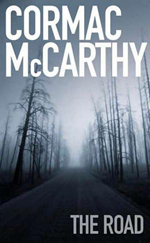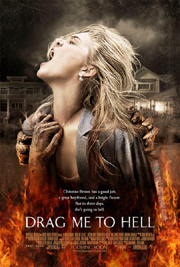When I sat down to start work on Zombie Blondes, there were a few key choices that I needed to make in terms of style. It was the first time I was attempting a horror novel and I had to decide what kind of fear I wanted to create. Not being an avid reader of the genre, I mostly used movies as my point of reference.
I’ve never been a huge fan of the brand of horror found in most American films. They tend to rely on fast cuts and spooky soundtracks to startle the viewer. I don’t particularly find this device effective in creating fear…the kind of real paralyzing, can’t turn away, fear that I wanted anyway. There’s a big difference between being scared and being startled. I recently went to see Drag Me Off to Hell and it’s a perfect example of what I mean. As viewers, we’ve become so used to this device that it no longer has the impact it did in say, the shower scene in Psycho. At most it gives us one or two cheap scares. In some cases, like in Drag Me Off to Hell, it can’t even achieve that because every startling moment is so telegraphed and we anticipate it. When this approach is taken in books, I find it even less effective regardless of how many exclamation points the author uses.
On the other hand, Asian horror films of the past decade or so have taken a different approach to create fear. They use long, steady camera shots to unsettle the viewer. The movies tend to build very slowly, lulling the viewer into the world they are projecting. After about an hour, they become so claustrophobic that you’re almost begging for some good old-fashioned American shock value. This type of horror was one I thought could translate very well into a novel.
The pace of Zombie Blondes is deliberately slow for the first half of the book. I wanted to create a world that lulled the reader into its creepiness. I didn’t want the reader to feel that the character was necessarily in danger, just that she wasn’t safe. I wanted them get to know her, to care about her as if she were a friend. This way when the danger does come, it’s terrifying. Unlike a typical zombie story, where the fear is of something, I wanted the fear in my book to be for someone. In the end, I don’t think the reader is afraid of the zombies but rather they’re afraid for Hannah.
 The book that uses this technique better than any other that I’ve read is probably The Road. Because the main character is so focused on survival, he refuses to allow himself to worry about the boy. But the reader, safe from the horror of the world in the book, is forced to feel the things the main character won’t allow himself to feel. The whole time I was reading it, I found myself scared for what might happen to the boy. That’s the kind of fear that stays with you. There’s no cheap scares in that.
The book that uses this technique better than any other that I’ve read is probably The Road. Because the main character is so focused on survival, he refuses to allow himself to worry about the boy. But the reader, safe from the horror of the world in the book, is forced to feel the things the main character won’t allow himself to feel. The whole time I was reading it, I found myself scared for what might happen to the boy. That’s the kind of fear that stays with you. There’s no cheap scares in that.
The reader of Zombie Blondes is always one step ahead of Hannah. They see the danger that lies ahead. And my hope is that they keep looking over their shoulder, terrified of what will happen to Hannah once she discovers what they already know.
Brian James is the author of several notable books including Pure Sunshine and Dirty Liar. He lives in a small town in upstate New York that may or may not be overrun with zombies. His new book, Zombie Blondes, is now available from Square Fish.










